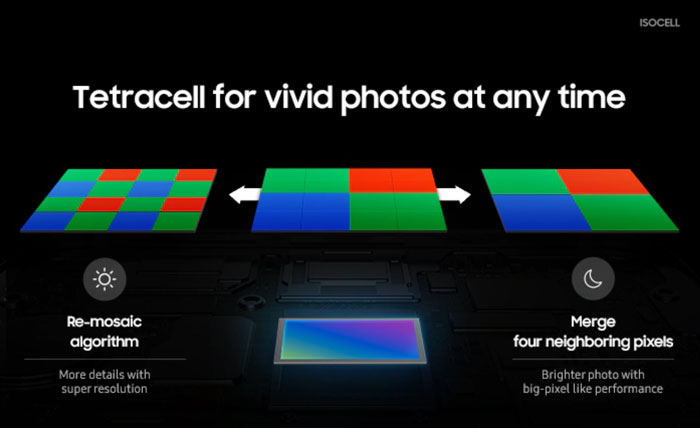Samsung Unveils 108 Megapixel Smartphone Camera Sensor
Samsung has joined forces with Xiaomi to build a new 108 megapixel image sensor. They say the sensor has “a resolution equivalent to that of a high-end DSLR camera”. And they are calling it the Isocell Bright HMX.
This will be the first smartphone image sensor to have over 100 megapixels. The sensor replace Samsung’s 64 megapixel sensor, as their highest resolution smartphone sensor. Samsung say the new sensor will provide “resolution equivalent to that of a high-end DSLR camera”.
Samsung’s ISOCELL technology was first announced in 2013. To reduce colour “cross talk” between neighbouring pixels, the developers have introduced a physical barrier between each one. This prevents colours bleeding from one pixel to neighbouring pixels, thus improving sharpness and increasing colour accuracy.
This is not only the first smartphone sensor to pass 100 megapixels, it’s also the biggest. The 1/1.33-inch sensor measures around 9.6 x 7.2mm. This is almost three times larger than the sensors commonly found in smartphones.
Works in Low-Light Conditions
Squeezing more pixels into the same size sensor normally creates a problem. Pixels need to be smaller and therefore don’t work so well in low light. So the payoff for higher resolution is poorer low-light performance.
What if pixels can change in size depending on the lighting condition?
However, Samsung’s new ISOCELL Bright HMX also produces exceptional photos even in extreme lighting conditions. Now, the pixel-merging Tetracell technology allows the sensor to imitate big-pixel sensors, producing brighter 27 megapixel images in low-light conditions and expanding up to 108 MP in brighter conditions.
While the physical structure of the pixels can’t be altered, Samsung & Xiaomi engineers found a way to transform them using an advanced algorithm.

When the camera is shooting in low-light conditions, the algorithm combines information and data from each group. Essentially, our smaller pixels are transformed into a larger pixel. However, in bright lighting conditions, the pixels are remapped into a conventional RGB pattern.
“In bright environments, the Smart-ISO, a mechanism that intelligently selects the level of amplifier gains according to the illumination of the environment for optimal light-to-electric signal conversion, switches to a low ISO to improve pixel saturation and produce vivid photographs.” Samsung
Samsung say tech uses a high ISO in low-light settings and helps reduce noise.
6K Video
The new sensor will bring 6K video to Samsung’s future smartphones. The HMX supports video recording without losses in field-of-view at resolutions up to 6K (6016 x 3384) and at 30 fps (frames per second).
Samsung says that mass production for the Samsung ISOCELL Bright HMX begins later this month. However, there’s no word on when we’ll see it in phones yet.
Read our official smartphone filmmaking KIT LIST.
Eager to learn more?
Join our weekly newsletter featuring inspiring stories, no-budget filmmaking tips and comprehensive equipment reviews to help you turn your film projects into reality!
Simon Horrocks
Simon Horrocks is a screenwriter & filmmaker. His debut feature THIRD CONTACT was shot on a consumer camcorder and premiered at the BFI IMAX in 2013. His shot-on-smartphones sci-fi series SILENT EYE featured on Amazon Prime. He now runs a popular Patreon page which offers online courses for beginners, customised tips and more: www.patreon.com/SilentEye

